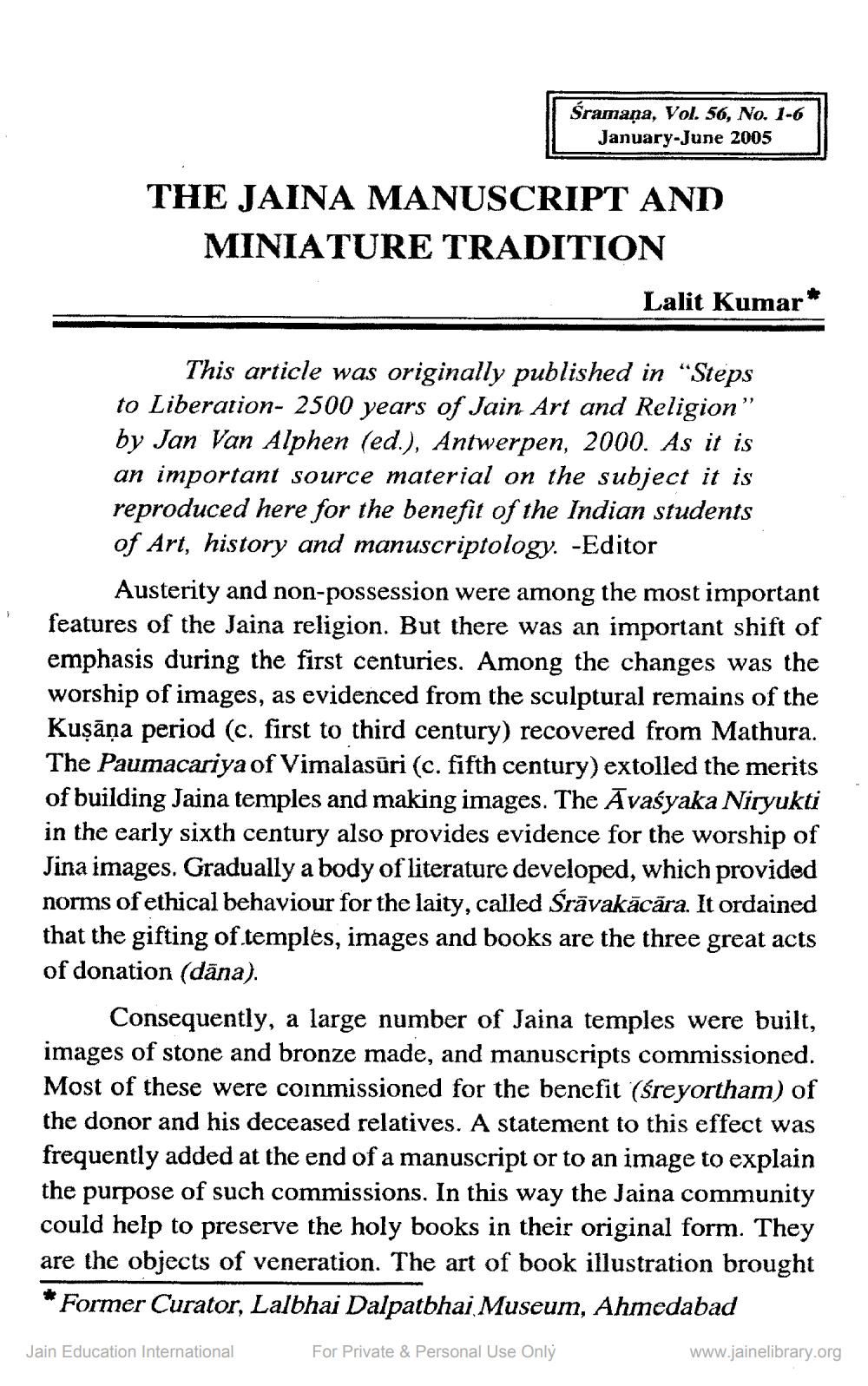________________
Śramana, Vol. 56, No. 1-6
January-June 2005
THE JAINA MANUSCRIPT AND MINIATURE TRADITION
Lalit Kumar*
This article was originally published in “Steps to Liberation- 2500 years of Jain Art and Religion” by Jan Van Alphen (ed.), Antwerpen, 2000. As it is an important source material on the subject it is reproduced here for the benefit of the Indian students of Art, history and manuscriptology. -Editor
Austerity and non-possession were among the most important features of the Jaina religion. But there was an important shift of emphasis during the first centuries. Among the changes was the worship of images, as evidenced from the sculptural remains of the Kuşāņa period (c. first to third century) recovered from Mathura. The Paumacariya of Vimalasūri (c. fifth century) extolled the merits of building Jaina temples and making images. The Avaśyaka Niryukti in the early sixth century also provides evidence for the worship of Jina images. Gradually a body of literature developed, which provided norms of ethical behaviour for the laity, called Srāvakācāra. It ordained that the gifting of temples, images and books are the three great acts of donation (dāna).
Consequently, a large number of Jaina temples were built, images of stone and bronze made, and manuscripts commissioned. Most of these were coinmissioned for the benefit (śreyortham) of the donor and his deceased relatives. A statement to this effect was frequently added at the end of a manuscript or to an image to explain the purpose of such commissions. In this way the Jaina community could help to preserve the holy books in their original form. They are the objects of veneration. The art of book illustration brought * Former Curator, Lalbhai Dalpatbhai Museum, Ahmedabad
Jain Education International
For Private & Personal Use Only
www.jainelibrary.org




